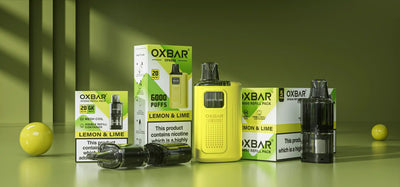There can be some confusion about vapes (sometimes called e-cigarettes or e-cigs). This is not surprising, because there is lots of misleading information out there.
Here are some of the most common myths about vaping, and the facts based on scientific evidence and data.
Important
Vaping is not completely harmless. We only recommend it for adult smokers, to support quitting smoking and staying quit.
Myth 1: Vaping is just as harmful as smoking
Fact
Nicotine vaping is not risk-free, but it is substantially less harmful than smoking.
In 2022, UK experts reviewed the international evidence and found that "in the short and medium-term, vaping poses a small fraction of the risks of smoking".
Cigarettes release thousands of different chemicals when they burn – many are poisonous and up to 70 cause cancer. Most of the harmful chemicals in cigarette smoke, including tar and carbon monoxide, are not contained in vape aerosol.
People who switch completely from smoking to vaping have significantly reduced exposure to toxins associated with risks of cancer, lung disease, heart disease and stroke.
Myth 2: Nicotine is very harmful to health
Fact
Although nicotine is addictive, it is relatively harmless to health.
It is the many other toxic chemicals contained in tobacco smoke that cause almost all the harm from smoking.
Nicotine itself does not cause cancer, lung disease, heart disease or stroke and has been used safely for many years in medicines to help people stop smoking.
Myth 3: Vaping does not help people quit smoking
Fact
Nicotine vapes are one of the most effective stop smoking aids.
Evidence shows that nicotine vapes are actually more effective than nicotine replacement therapies, like patches or gum.
Some people find vaping helps them because the hand-to-mouth action is like smoking, plus you get similar sensations, like "throat hit".
It's important to choose an e-liquid with enough nicotine to reduce withdrawal symptoms and urges to smoke. A specialist vape shop or your local Stop Smoking Service can advise you.
Find out more about using vapes to quit smoking.
Almost two-thirds of people who use a vape along with support from their local Stop Smoking Service successfully quit smoking.
Myth 4: Switching to a vape is just swapping one harmful addiction for another
Fact
While vapes contain the same addictive substance as cigarettes, vaping nicotine is far less harmful.
Smoking gives you nicotine by burning tobacco, which creates many harmful toxins that can cause serious illnesses including cancer, lung disease, heart disease and stroke.
Vaping gives you nicotine by heating an e-liquid, which is much less harmful. Vaping exposes users to far fewer toxins and at lower levels than smoking cigarettes.
When you are ready and feel sure you won't go back to smoking, you can gradually reduce the nicotine strength in your e-liquid and your vaping frequency until you have stopped fully and are nicotine-free.
Myth 5: People use vapes more frequently than cigarettes – that must be worse
Fact
It is normal to vape more frequently than you used to smoke, and this is not more harmful.
Each puff on a vape carries a small fraction of the risks of a puff on a cigarette.
Vaping is different from smoking in the way it delivers nicotine to the brain. With smoking, you get a very quick hit in the short time it takes to smoke a cigarette.
With vaping, generally it takes longer for nicotine to reach the brain and you need to "sip" on your vape more frequently.
It's important to use your vape as much as you need to help you stop smoking and stay quit.
Myth 6: Vapes are not regulated and we do not know what's in them
Fact
In the UK, nicotine vaping products are tightly regulated for safety and quality.
All products for sale must be notified to the Medicines and Healthcare products Regulatory Agency (MHRA) with detailed information including listing of all ingredients.
Always buy your vaping products from a reputable supplier like a specialist vape shop, pharmacy, supermarket or a UK-based online retailer so they are covered by UK safety and quality regulations.
Myth 7: Vaping causes 'popcorn lung'
Fact
Vaping does not cause "popcorn lung", the common name for a rare disease called bronchiolitis obliterans.
The disease was found in a group of factory workers exposed to a chemical (diacetyl) used to flavour popcorn.
Diacetyl is contained in cigarette smoke, but it is banned as an ingredient in UK-regulated nicotine vapes and e-liquids.
Myth 8: Exposure to vape aerosol is harmful to people around you
Fact
There is no evidence so far that vaping is harmful to people around you.
While secondhand smoke from cigarettes causes serious harm to others, there is no evidence so far that vaping is harmful to people around you, and any risks are likely to be very low.
But as a precaution, it is best not to vape around babies and children if you can avoid it. Young children often copy what adults do.
Always be considerate when vaping around anyone else, especially people with health conditions like asthma who might be more sensitive to vape aerosol.
Myth 9: A disposable vape can deliver as much nicotine as 40 or 50 cigarettes
Fact
A UK standard disposable vape delivers a similar amount of nicotine as 20 cigarettes.
A UK-regulated disposable vape with the highest legal nicotine level (20mg/ml) contains 2ml of liquid and 40mg of nicotine. This delivers, on average, about 20mg of nicotine to the user.
A pack of 20 cigarettes contains 200 to 300mg of nicotine. This delivers, on average, 20 to 30mg of nicotine to the smoker.


